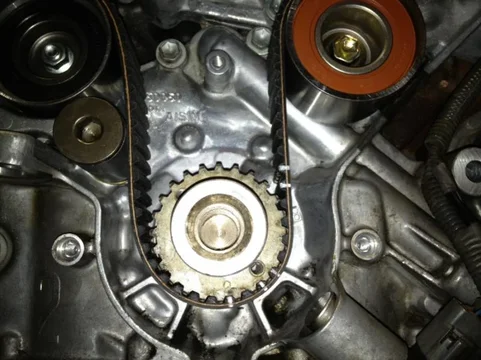The 2UZ is a 32V DOHC with both cams (per side) gear driven off a single toothed pulley. One cam (toward the center) is intake, the other is exhaust. There are no adjustable rockers; the lobes directly push on buckets on top of the valve stems.
The intake cams are driven by the timing belt. The exhaust cams are gear driven by the intake cams. ON the VVT motors there is a "camshaft timing tube" on the front of each intake cam.


